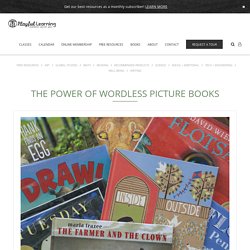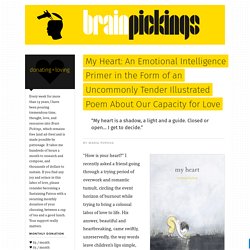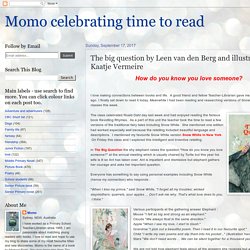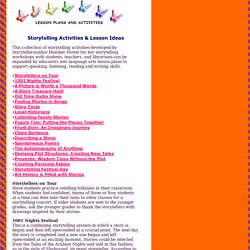

Grandmother – Jeannie Baker. The Power of Wordless Picture Books – Playful Learning. Loading...

A few months ago, I was at home perusing a stack of books that I was planning to share with the students in my 2nd/3rd grade classroom. My kindergarten daughter peeked over my shoulder and nonchalantly said, “Mommy, is that a think book?” The question confused me, but I knew I needed to dig a little deeper because I could see her wheels spinning. So I asked her to explain what she meant by think book. She replied, “Well, because you have to think about what’s happening.” Over the years, I have had many students tell me that wordless books are for children who cannot yet read.
In my opinion, wordless picture books are even more difficult to “read” than other picture books. Young readers (pre-emergent, emergent, and early readers) can use wordless picture books to learn how the illustrations support and often drive a story. My Heart: An Emotional Intelligence Primer in the Form of an Uncommonly Tender Illustrated Poem About Our Capacity for Love. “How is your heart?”

I recently asked a friend going through a trying period of overwork and romantic tumult, circling the event horizon of burnout while trying to bring a colossal labor of love to life. His answer, beautiful and heartbreaking, came swiftly, unreservedly, the way words leave children’s lips simple, sincere, and poetic, before adulthood has learned to complicate them out of the poetry and the sincerity with considerations of reason and self-consciousness: “My heart is too busy to be a heart,” he replied. The big question by Leen van den Berg and illustrated by Kaatje Vermeire. How do you know you love someone?

I love making connections between books and life. What's Going On In Your Child's Brain When You Read Them A Story? While the children paid attention to the stories, the MRI, the machine scanned for activation within certain brain networks, and connectivity between the networks. "We went into it with an idea in mind of what brain networks were likely to be influenced by the story," Hutton explains. One was language. One was visual perception.
The third is called visual imagery. The fourth was the default mode network, which Hutton calls, "the seat of the soul, internal reflection — how something matters to you. " The default mode network includes regions of the brain that appear more active when someone is not actively concentrating on a designated mental task involving the outside world. Reklamsız Sözcü Deneyimi. Pixar's 22 Rules of Storytelling. Everyone from Kurt Vonnegut to Ernest Hemingway has shared his ideas on crafting solid narrative writing.

One of the most recent sages to join the canon is Emma Coates, Pixar’s former story artist. Her list of the 22 Rules of Good Storytelling gleaned on the job has been gaining Internet traction since it was published last June. Twenty two? That's twenty more than Tolstoy. I know some people enjoy a lot of direction, but those of us who relish bushwhacking start to chafe when the road is that heavily signposted. By all means, sample Coates' Pixar 22 (see them all below). As for myself, I am repurposing #4 - the only rule that doesn't contain an implied order or some derivative of "you" - as an extremely jolly parlor game. Mem Fox. Storyline Online. Close Reading: Wilfrid Gordon McDonald Partridge This lesson allows the students to retell a story a ...
Lesson Plan Template: General Lesson Plan Learning Objectives: What should students know and be able to do as a result of this lesson?

Students will:retell a story using key details to demonstrate an understanding of the story Wilfrid Gordon McDonald Partridge by Mem Fox.ask and answer questions about key details in the text.demonstrate an understanding of the central message in a short opinion essay.describe key details, such as characters and major events, through discussion and a cooperative learning strategy. Prior Knowledge: What prior knowledge should students have for this lesson? Students will need to:be familiar with story elements (characters, setting, major events).have some knowledge of the comprehension strategy Making Connections (This reminds me of…).know how to write an opinion paragraph with grade-appropriate organization, grammar and conventions.know how to complete graphic organizers and writing plan sheets.know procedures for partner work.
Creative Drama Lesson Plans. Creative Drama Lesson Plans. Storytelling Activities & Lesson Ideas. Storytelling Activities & Lesson Ideas This collection of storytelling activities-developed by storyteller/author Heather Forest for her storytelling workshops with students, teachers, and librarians-can be expanded by educators into language arts lesson plans to support speaking, listening, reading and writing skills.

TELLING A STORY. 1.

Introduction Everyone loves to listen to stories. There is hardly anyone among us who has not heard a story during our childhood. Stories keeps children engaged and let them feel that they are also participating in the process of story telling. Four Stories about Storytelling – ❖ Aaron White. Helen Keller & The Hero’s Journey When Helen Keller was only a year-and-a-half old, illness left her blind & deaf, and her prospects for communication looked grim.

Six years later, in 1886, her parents found & called upon Anne Sullivan, an experienced teacher of the blind, to help a 7-year old Helen learn to communicate in terms of names and letters. Teaching Helen was immensely challenging, and when it seemed like she might never learn, Anne spelled “water” on Helen’s hand while running it under cool water. In that moment, language and naming ‘clicked’ for Helen. ESL: English as a Second Language - Free English learning resources. Life with a Toddler. 30 Storytelling Tips For Teachers: How To Capture Your Student’s Attention.